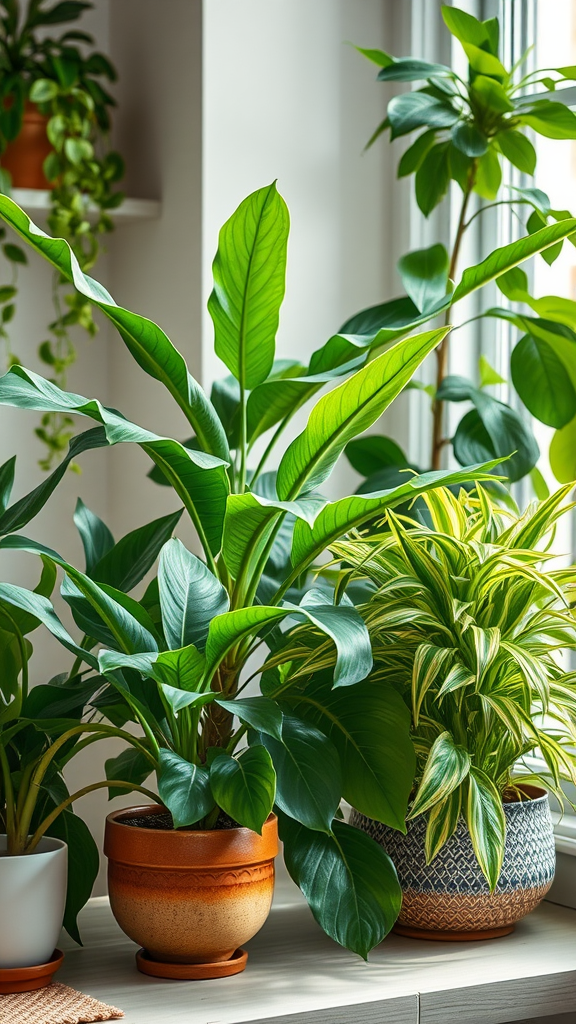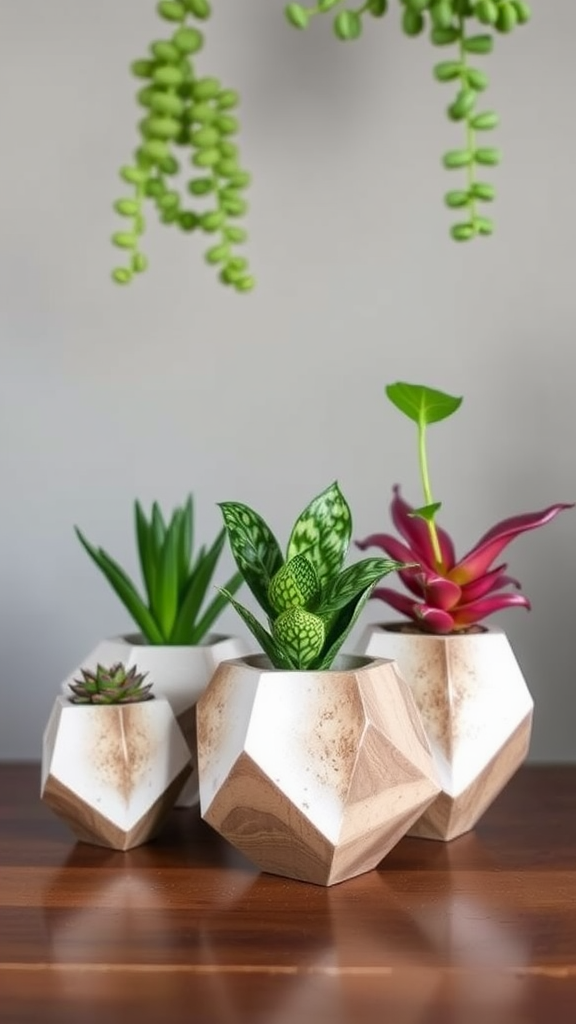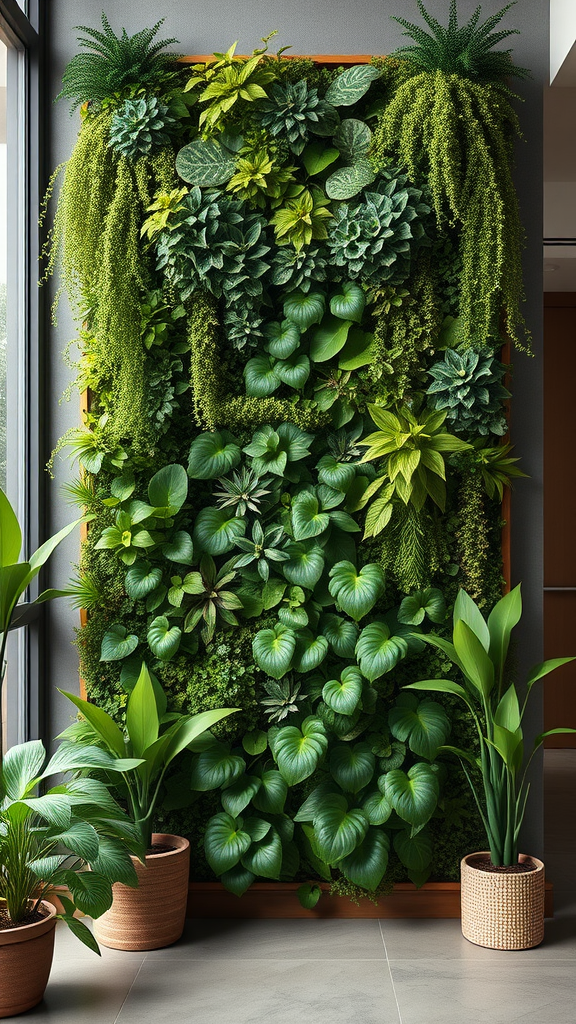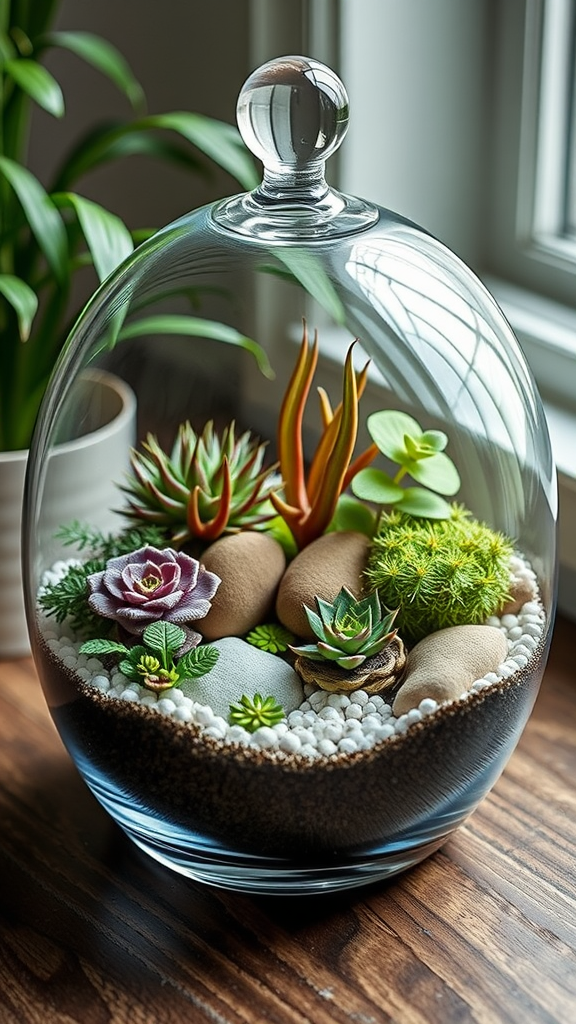Essential Tips for Houseplant Care 101: Keep Your Plants Thriving
Are you ready to dive into the world of houseplant care? Keeping your plants thriving doesn’t have to be a daunting task. With the right knowledge and a few essential tips, you can create a vibrant indoor garden. Let’s explore some effective ways to nurture your green companions!
Understand Your Plant’s Needs
Every plant is unique. Some thrive in bright light while others prefer shadier spots. Take the time to learn about your specific plants. Here are some key factors to consider:
- Light: Place your plants in areas that match their light requirements. For instance, succulents love direct sunlight, while ferns prefer indirect light.
- Water: Overwatering is a common mistake. Check the soil; if it feels dry an inch down, it’s time to water.
- Humidity: Many houseplants thrive in higher humidity. Consider grouping plants together or using a humidifier.
- Temperature: Most houseplants enjoy temperatures between 65°F and 75°F. Protect them from drafts and sudden temperature changes.
Watering Wisely
Watering effectively is crucial for plant health. Here’s how to make sure you’re doing it right:
- Frequency: Instead of a set schedule, check your plant’s moisture level. Water when the top inch of soil is dry.
- Watering technique: Water deeply so that it reaches the roots. Make sure excess water can drain out of the pot to avoid root rot.
- Seasonal changes: Reduce the amount of water you give during the winter months when many plants enter a resting phase.
Feeding Your Houseplants
Fertilizer gives your plants the nutrients they need to grow strong and healthy. Here are some tips for effective fertilizing:
- Choose the right fertilizer: Look for a balanced, water-soluble fertilizer specifically designed for houseplants.
- Feeding schedule: During the growing season (spring and summer), feed your plants every 4-6 weeks. In fall and winter, cut back to once every couple of months.
- Signs of over-fertilizing: If you notice burnt leaf edges or yellowing, you might be overdoing it. Flush the soil with water to remove excess salts.
Pruning and Repotting
Keeping your plants healthy also means knowing when to prune or repot them. These steps are essential for growth.
- Pruning: Remove any yellow or dead leaves regularly. This helps your plant focus its energy on new growth.
- Cuts and trimming: Trim back leggy growth to encourage bushier growth. Use clean, sharp scissors.
- Repotting: If your plant is root-bound (roots coming out of the pot), it’s time to repot. Choose a pot one size larger with fresh potting mix.
Watch for Pests
Even the healthiest plants can fall victim to pests. Regularly check for signs of infestations. Here are some common pests and how to handle them:
- Aphids: Small and green, they tend to congregate on new growth. Use insecticidal soap to rid your plant of these pests.
- Spider mites: These tiny pests leave webbing on leaves. Increase humidity and use a gentle soap treatment.
- Mealybugs: Recognizable by their white, fluffy appearance, they can be wiped off with a cotton swab dipped in rubbing alcohol.
By following these essential tips, you’re on your way to creating a thriving indoor garden. Remember that each plant has its unique requirements, so be attentive and don’t hesitate to research specific care instructions. Your plants will thank you with vibrant leaves and beautiful growth!
Common Mistakes to Avoid in Houseplant Care and Maintenance
Houseplants can bring joy and vitality to your home, enhancing your environment and improving air quality. However, many plant lovers unknowingly make common mistakes that can harm their plants. Understanding what not to do is just as crucial as knowing the proper care guidelines. Here are several common pitfalls to watch out for when nurturing your green companions.
Overwatering Your Plants
One of the most frequent mistakes in houseplant care is overwatering. While plants need water to thrive, too much can lead to root rot. This condition typically occurs when the roots sit in standing water, depriving them of oxygen. To avoid overwatering:
- Check the soil moisture by sticking your finger about an inch deep. If it feels dry, it’s time to water.
- Ensure your pots have drainage holes to allow excess water to escape.
- Choose the right potting mix that retains moisture but drains well.
Underestimating Light Requirements
Each houseplant has different light preferences, and putting your plants in the wrong spot can stunt their growth or even kill them. Be mindful of the following:
- Research your specific plant to understand whether it needs direct, indirect, or low light.
- Position your plants away from drafts or excessive heat sources that can affect temperature.
- Rotate your plants every few weeks to ensure all sides receive adequate sunlight, preventing uneven growth.
Ignoring Humidity Levels
Many houseplants come from tropical regions that thrive in high humidity. If the air in your home is dry, your plants may suffer. To maintain proper humidity:
- Consider using a humidifier in dry months or during winter.
- Group plants together, as they release moisture into the air, benefiting each other.
- Place a tray filled with water and pebbles under your plants to enhance humidity.
Not Fertilizing Regularly
Plants need nutrients just like we do. Neglecting to fertilize can lead to nutrient deficiencies, causing poor growth or discoloration. To ensure your plants are well-fed:
- Choose a balanced, water-soluble fertilizer appropriate for your plant species.
- Follow the recommended application frequency, typically every four to six weeks during the growing season.
- Observe your plants and adjust your fertilization routine according to their needs.
Neglecting Pest Control
Pests can rapidly invade your houseplants if not managed. Regularly inspect your plants for signs of infestation such as webbing, sticky residue, or discolored leaves. Here’s how to address pest issues:
- Quarantine new plants for a couple of weeks to prevent the spread of pests.
- Use insecticidal soap or neem oil to treat infestations naturally.
- Keep your plants clean by wiping leaves with a damp cloth to remove dust and pests.
Failing to Prune
Pruning may seem unnecessary, but it’s essential for the health of your plants. Regularly trimming off dead or yellowing leaves not only improves appearance but also allows the plant to focus energy on new growth. Don’t forget to:
- Use clean, sharp scissors to reduce the risk of infection.
- Remove any leggy growth that may indicate a lack of adequate light.
- Consider repotting plants that have outgrown their containers for better growth.
By avoiding these common mistakes, you can create a thriving environment for your houseplants. Remember, each plant has unique requirements, so taking the time to understand their needs is key to success. With a little patience and care, you will enjoy a lush and healthy indoor garden.
Conclusion
Taking care of houseplants can be a fulfilling and enjoyable experience when armed with the right knowledge and practices. By following the essential tips outlined in Houseplant Care 101, you can ensure your green friends thrive and bring beauty to your living space. Remember to provide adequate light, water, and nutrients tailored to the specific needs of each plant. Regularly check for pests and maintain proper humidity to create an ideal environment for growth.
Avoiding common mistakes is equally important. Overwatering, for instance, is a leading cause of plant distress. Make sure to adjust your watering habits based on seasonal changes and the plant’s needs. Additionally, be cautious about placing your plants in harsh direct sunlight or neglecting their repotting requirements. Each of these factors plays a vital role in your plants’ overall health and vitality.
Your journey into houseplant care is all about learning and growing alongside your plants. Don’t hesitate to experiment and find what works best for you and your unique indoor garden. Celebrate the small victories, like new growth or blooms, and don’t be discouraged by setbacks—they’re part of the process. With a little patience and persistence, you’ll cultivate not just plants, but also a deeper connection to nature right in your home. By embracing these tips and being mindful of pitfalls, you can create a thriving indoor oasis that enhances both your living environment and your overall well-being. Happy planting!





